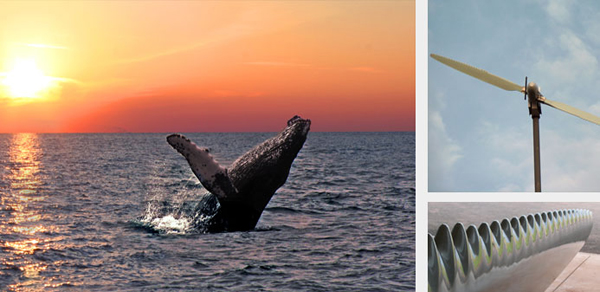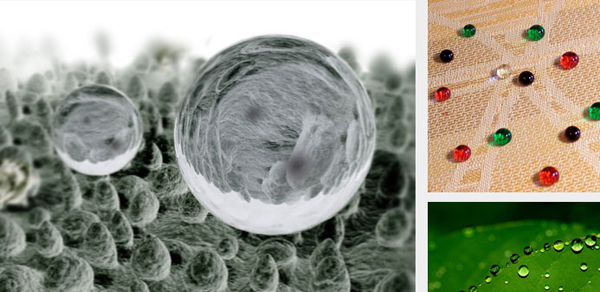It was Mr. DeSanto’s biology class in 12th grade that first had me in awe over the intricate systems prevalent in all plants and animals. For me, science had always been a routine class where I did what I needed to get a good grade, but had no passion for what I was learning. Things changed when I found it impossible not to share Mr. DeSanto’s wide-eyed enthusiasm for the thousands of steps a cheetah’s body goes through to simply bend its head down to take a cool drink of water. As we continued to learn more about the complex systems that take on different forms in every plant and animal on the earth it began to change the way I perceived nature, inspiring a new sense of reverence.
I was intrigued in this way again recently by a lecture when my co-workers Karen and Will took me to the Bioneers conference. One of the speakers, Janine Benyus, reminded me of Mr. DeSanto when she began her talk by eloquently describing the brilliant ways that nature is a genius. In the TEDtalk featured below, Benyus speaks about the science of biomimicry. Biomimicry studies nature’s models and then uses these designs and processes to solve human problems. In her talk she states: “people are beginning to remember that organisms, the rest of the natural world, are doing things very similar to what we need to do. But in fact they are doing it in a way that has allowed them to live gracefully on this planet for billions of years.”
Benyus co-founded the Biomimicry 3.8 Institute and their website features fascinating case examples of ways in which scientists and engineers have looked to the natural world for inspiration and guidance in inventing things humans need. The Biomimicry 3.8 institute also hosts asknature.org, which provides an open source database of nature’s solutions to human design challenges. The wide range of areas that biomimicry applies to include: agriculture, architecture, energy efficiency, industrial design, medicine, transportation, etc.


My first thought after Benyus’s talk was how I could see kids connecting to and learning from these visual representations of biomimicry. Learning how a system functions, and connecting that to inventing a new system seemed like a fundamental concept that kids could learn and relate to. In her talk, Benyus described the importance of teaching and involving youth in the biomimicry movement. Each year the Biomimicry 3.8 Institute hosts a youth design challenge for K-12 and university students, inspiring them to work collaboratively in teams to apply biomimicry concepts and tools to arrive at sustainable and innovative design solutions. The Institute also offers curricula and resources to educators to provide students with an interesting context for STEM (science, technology, engineering and math) learning.
Similarly, the Education and Environment Initiative Curriculum also provides an engaging context for students to learn new concepts while providing a deep understanding of our relationship to the natural world. A survey of over 500 teachers conducted by an independent evaluator found that 90% of teachers stated that students gained a greater understanding of the environment and the important interconnections between humans and ecosystems through the lessons.
Both biomimicry and environment-based education provide students with a context to feel passionate about the world in which they live. Their understanding of the natural world as it connects to their lives and futures provides the spark of innovation that will help us tackle the problems of the future.


One Response
Thank you, Ariel, for the insightful thoughts. Although we human beings are superior organisms in some ways, we still have a lot to learn from nature. Biomimicry has recently proven to be helpful to the development of some important industries. One that quickly comes to mind is robotics. Many of us would love to see engineers manufacturing and programming cost-effective robotic insects, for example, to deliver important goods like medicine to those in need all over the world. Insects know very well how to transport things all over the world. Nothing is stopping us from mimicking them. These are real solutions that arise from studying the miraculous nuances of nature and organisms that we often neglect. Here is another TED talk that explains more about this: http://www.ted.com/talks/robert_full_on_engineering_and_evolution
I don’t intend to solicit, but my company (armageddonenergy.com) builds lightweight solar panels that are hexagonal. Why hexagons? you might ask. Because hexagons fit together as beautifully as the compartments of a beehive. Go biomimicry!